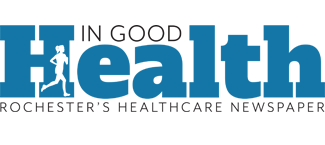By Ernst Lamothe Jr

Congenital heart disease encompasses a range of structural heart abnormalities present at birth. These defects can affect the heart’s walls, valves and blood vessels, leading to improper blood flow and circulation.
CHD is one of the most common congenital conditions, impacting individuals across all demographics and often requiring lifelong management.
Advances in medical technology and surgical techniques have significantly improved survival rates and quality of life for those affected, but challenges remain in diagnosis, treatment and support.
Understanding CHD is crucial for raising awareness, improving outcomes and fostering empathy for those living with this condition.
“Learning and talking about this topic is crucial for several reasons. Enhancing maternal-fetal care is paramount,” said physician Scott C. Feitell, director of heart failure and director of cardiac intensive care unit at Rochester Regional Health. “Women can seek appropriate counseling pre-conception and ensure adequate prenatal care can lower risks of maternal-fetal harm throughout pregnancy. Many children born with congenital heart disease get lost to follow up as they outgrow their pediatricians. It is not uncommon for patients to be referred to me in the community who had heart surgery as a child, but then get lost to follow up when they leave for college.”
Feitell discusses five components to the disease.
1 — How common is it?
Congenital heart disease is one of the most prevalent birth defects, affecting approximately 1 in 100 to 1 in 200 live births globally. This means that around 40,000 babies are born with CHD each year in the United States alone.
“It is more common than we realize,” said Feitell. “Most importantly, because we have improved management, diagnosis and treatment of congenital heart disease in babies, there are now more adults living with congenital heart disease than children in the U.S.”
Physicians work with pediatric cardiologists to collaborate with options throughout their adulthood so they can monitor the situation and watch out for any additional signs.
2 — What are the symptoms?
Symptoms of CHD can vary widely depending on the specific type and severity of the defect. Common symptoms may include rapid or difficulty breathing, a bluish tint to the skin, lips or fingernails, fatigue or weakness, poor feeding or growth in infants and swelling in the legs, abdomen or eyes. Some individuals may be asymptomatic, particularly in cases of mild defects.
“Symptoms can really vary depending on the type of defect. In babies and children congenital defects can lead to low oxygen levels, it can be a cause of heart failure and may even require a heart transplant,” said Feitell. “In the modern era, most of these cases are identified in utero or immediately after birth and managed at that time.”
3 — What are the causes and treatment options?
The exact causes of congenital heart disease are often unknown, but several factors may contribute, including genetic predispositions and environmental influences. Some CHD cases are associated with specific genetic syndromes, while others may be linked to maternal health factors such as diabetes, certain medications or infections during pregnancy.
“The majority of congenital defects develop in utero. Many are linked to genetic diseases or abnormalities that can be inherited from parents,” said Feitell. “Sometimes certain medications or exposures such as infections during pregnancy from mom can cause a congenital defect in the baby. Certain genetic defects like Down syndrome and Turner syndrome also carry a high risk of congenital heart disease. A mother’s diabetes has also been linked to higher incidence of congenital heart disease in their infant.”
4 — Family history
There can be a family history component to congenital heart disease. Having a family member with CHD may increase the risk of CHD in other family members. Genetic counseling is often recommended for families with a history of heart defects, as certain genetic conditions can be inherited.
“Definitely [there is] a family component,” he added. “Many common inherited disorders include atrial septal defects, ventricular septal defects, tetralogy of fallot, bicuspid aortic valves and many others. Women of childbearing age that have a family history of CHD, may be diabetic or have other risk factors should seek proactive counseling and assessment to minimize risks to themselves and their baby.”
5 — Myths
“The single biggest misconception of CHD is that it only affects kids. Many individuals think once surgery is done as a kid then that is the end of it and nothing more needs to be done once a kid turns 18,” Feitell said. “The other misconception is that women of child-bearing age can’t take some preventive measures or seek counseling to help decision making if they are at risk of having a child with CHD. Our group runs a cardio-obstetrics program in conjunction with our high-risk pregnancy team at RRH, and women are often shocked when they are told to come to our office.”

